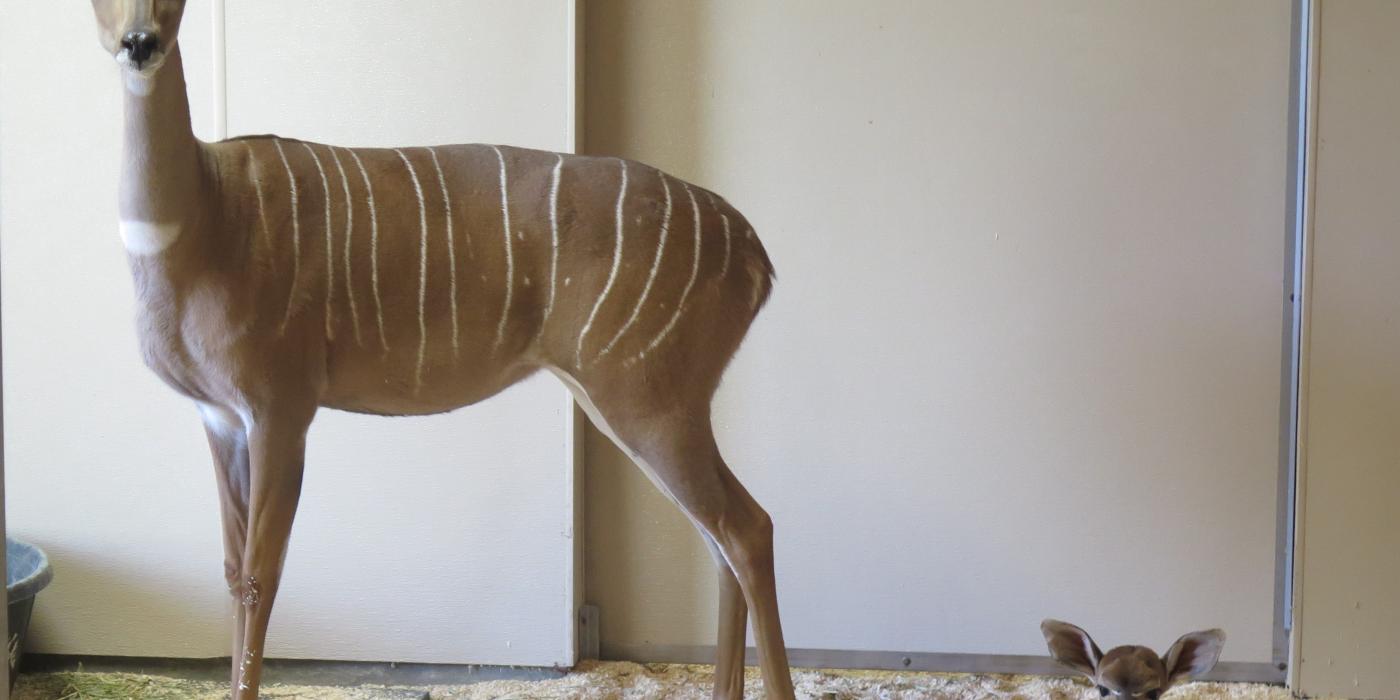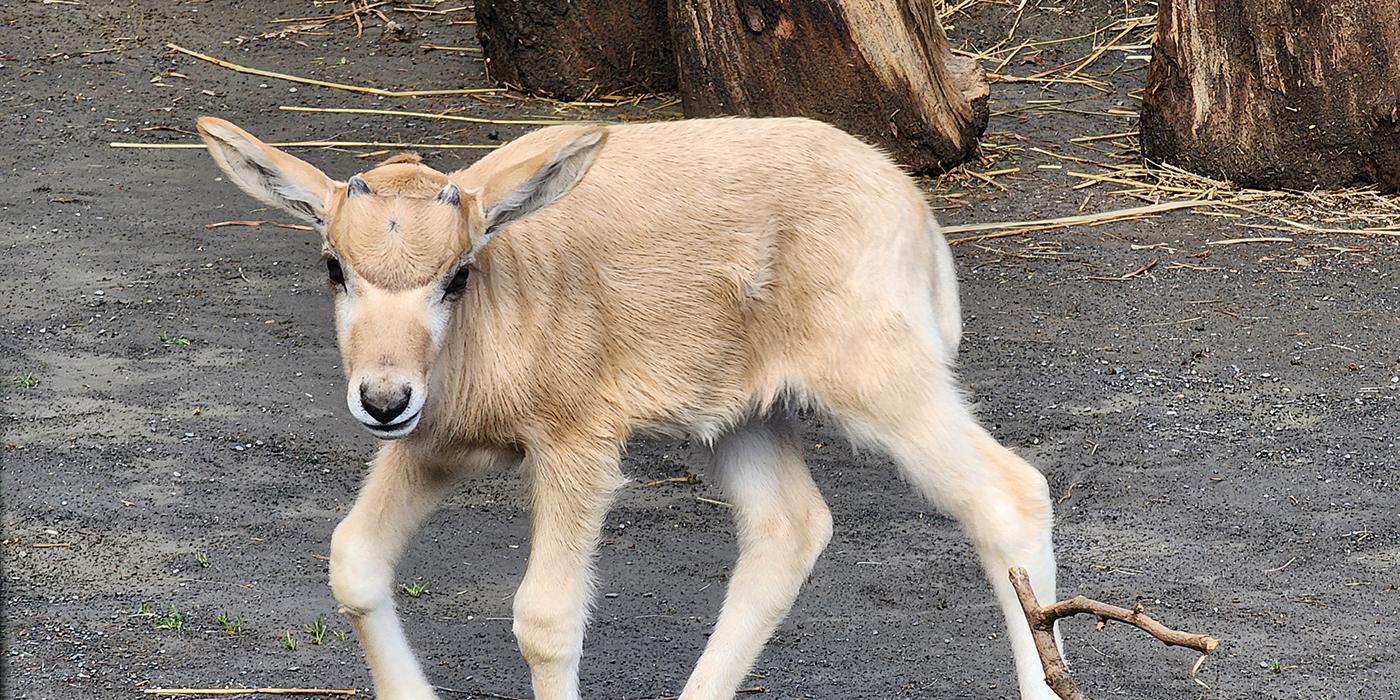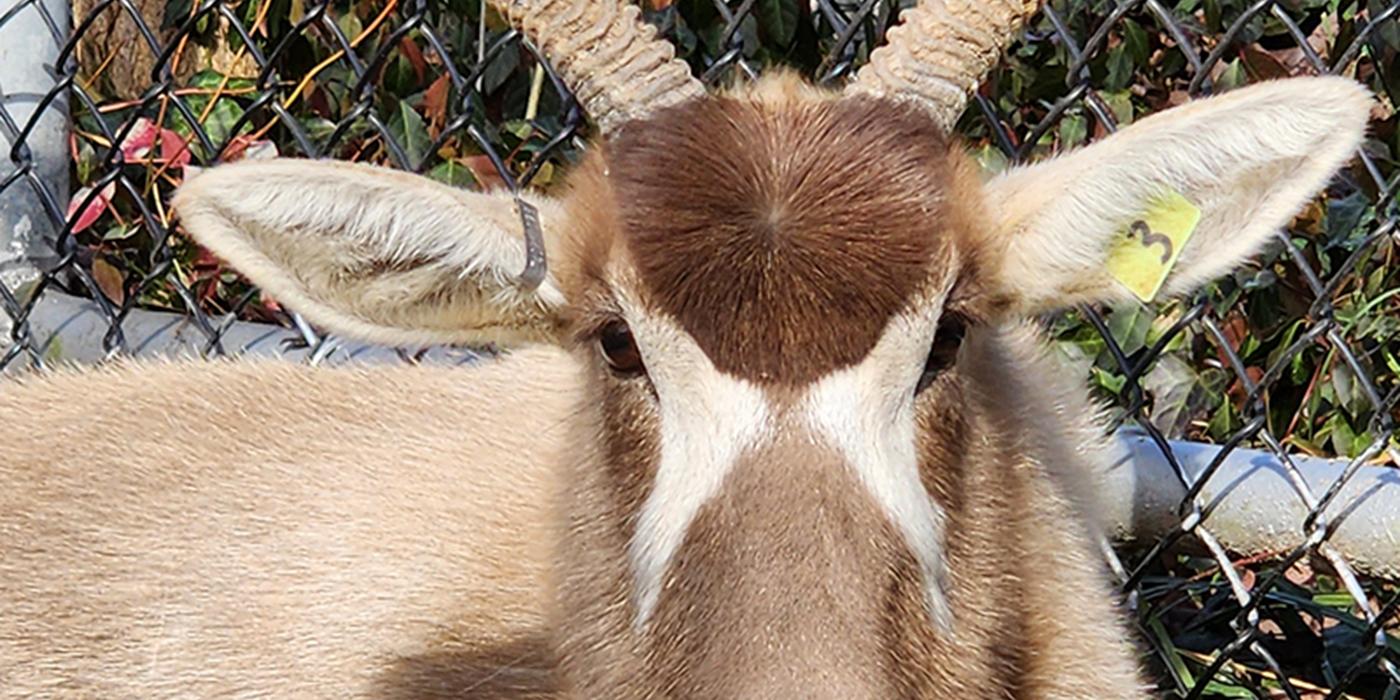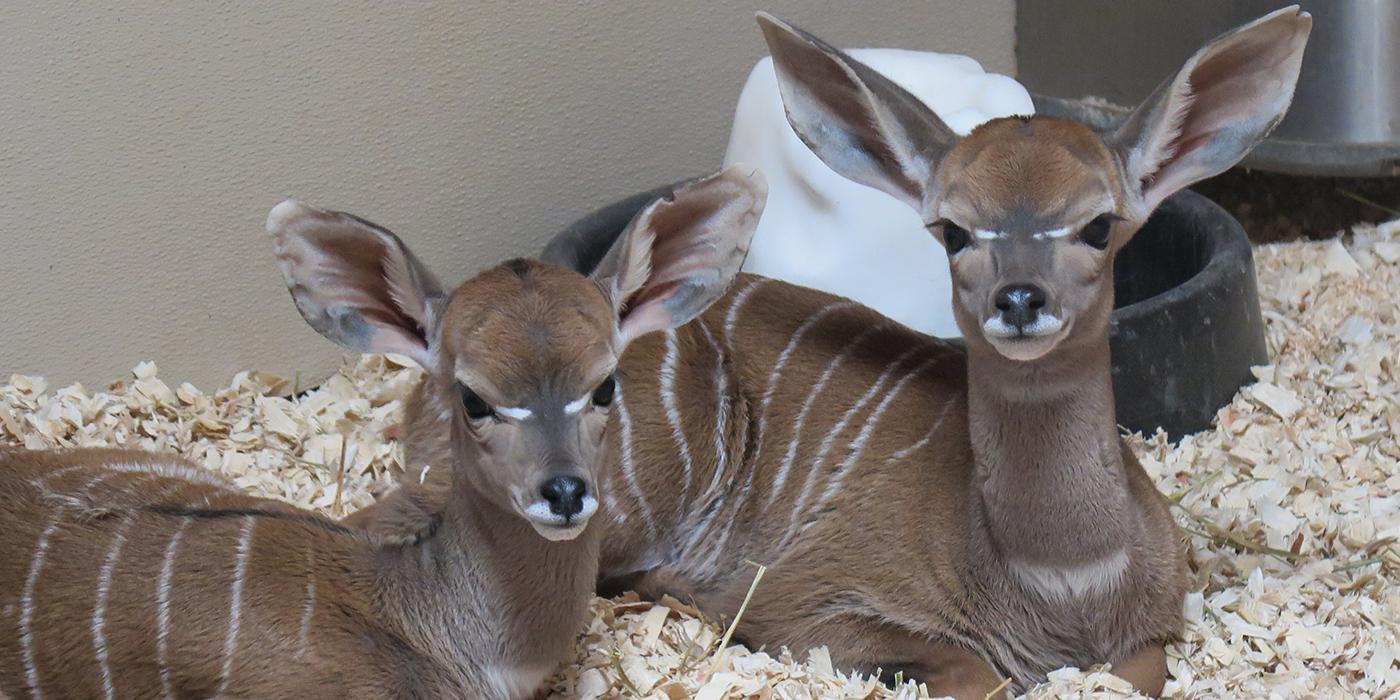Meet the Zoo’s New Kudu Calf
On Oct. 15, the Zoo welcomed a bouncing baby to its lesser kudu family! The new (and adorable) arrival, a male, was born to 5-year-old mother Rogue and 9-year-old father, Garrett. This past week, he joined his mom and brother, Kushukuru, on exhibit for the first time. Get the scoop on the calf from Gil Myers, assistant curator for Cheetah Conservation Station.
How is the calf doing?
He is fantastic and quite the adventurer! The very first week we let him outside, he was very brave and even ventured away from Rogue and Kushukuru (or "Kushu," for short) into the center of the yard to inspect the plants and trees. While he was off exploring his surroundings, his mom and brother hung toward the back of the exhibit, where they could hide among some of the taller bushes in the yard. Eventually, he noticed that they were back there and ran over to join them, but the fact that he felt comfortable enough to explore on his own, even for a short period, is encouraging. He is only 7 weeks old and is becoming more independent by the day.
What is his personality like?
Hoofstock — antelopes and gazelles — tend to be very cautious around people. We want the calf to be comfortable around us, so we spend a fair amount of time around him while maintaining a comfortable distance. Building his trust in us will allow us to train him to voluntarily participate in his own daily care down the road. Whenever we enter the yard, he is very curious about what we are doing and watches our every move! Kushu routinely approaches us and will stand about 10 feet away — but that is because he knows we have treats.
Related Species:




